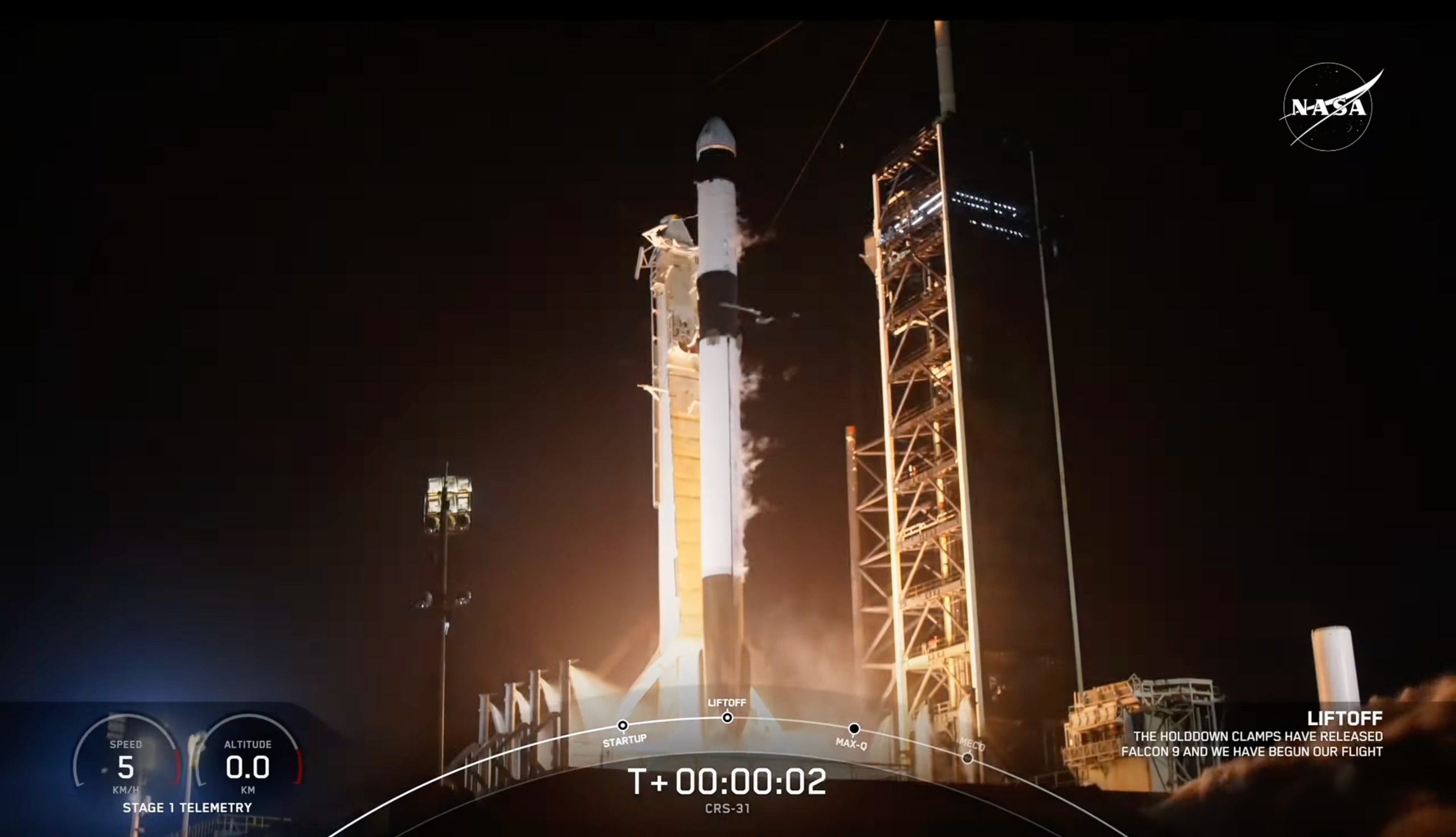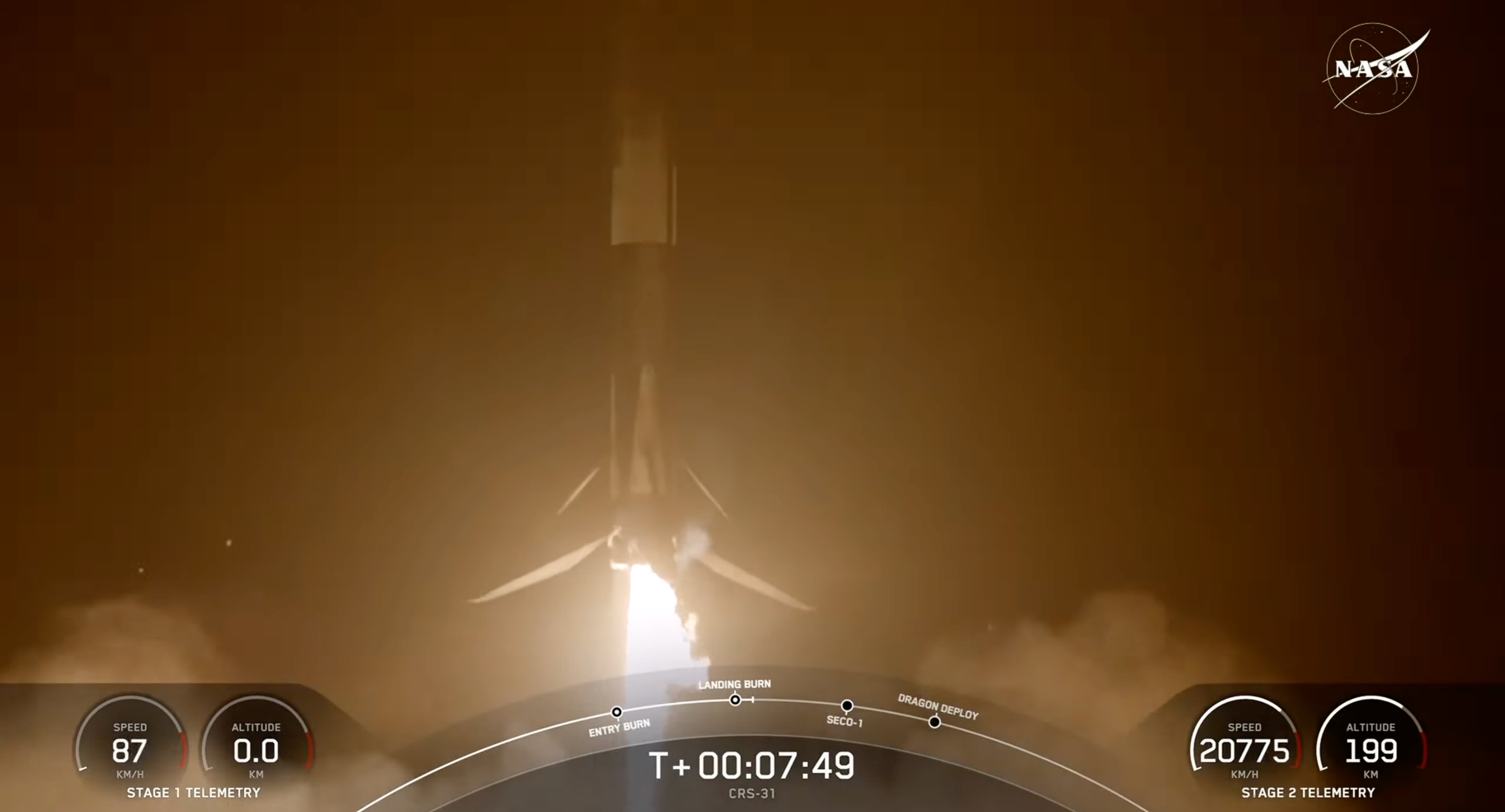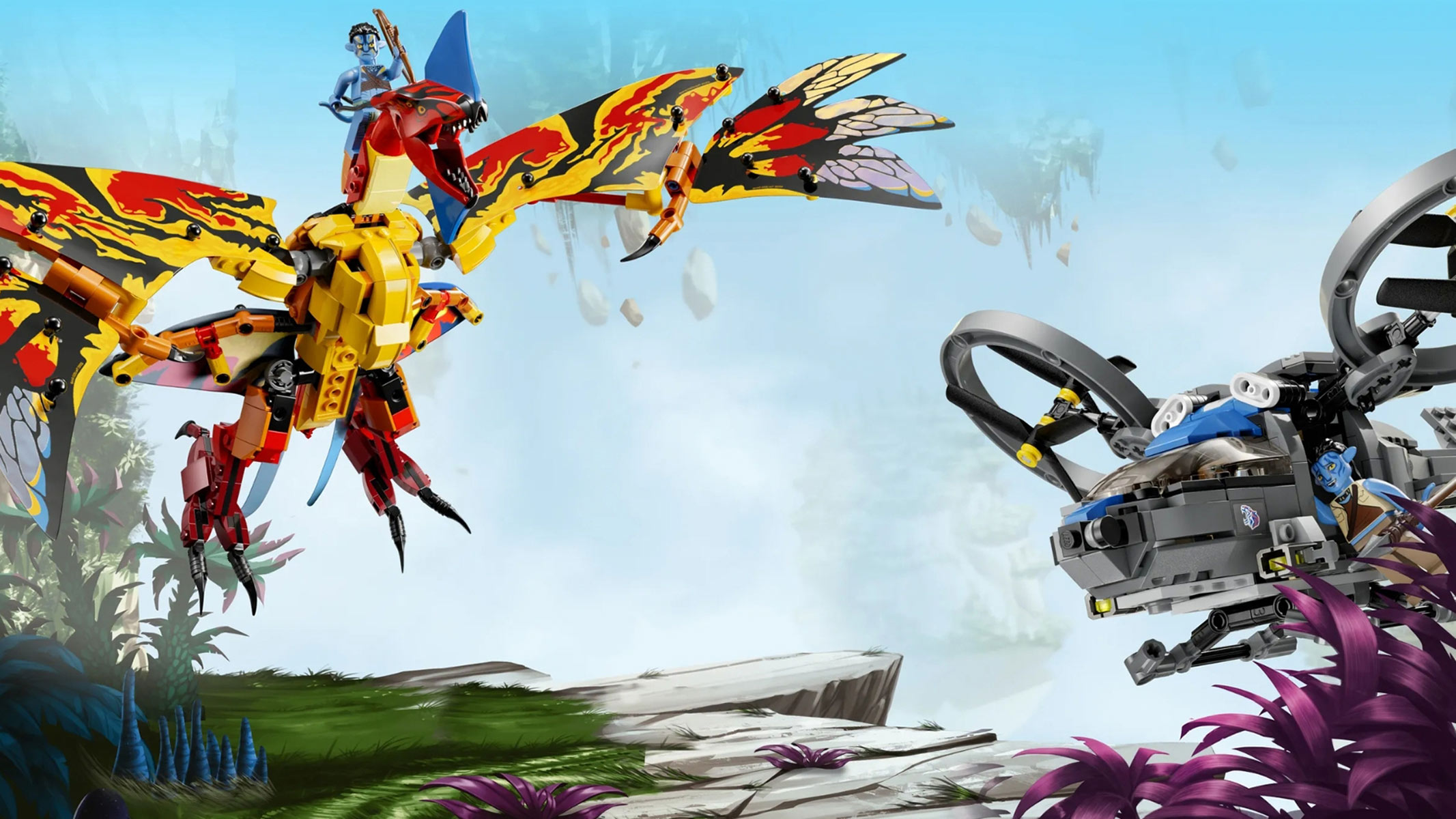SpaceX launches 3 tons of cargo on 31st ISS resupply flight for NASA (video)
SpaceX launched nearly 6,000 pounds (2,700 kilograms) of supplies to the International Space Station (ISS) tonight (Nov. 4).
A Falcon 9 rocket lifted off from Pad 39A at NASA’s Kennedy Space Center (KSC) in Florida today at 9:29 p.m. EST (0129 GMT on Tuesday, Nov. 5), kicking off SpaceX's 31st robotic resupply mission to the ISS for NASA.
The Falcon 9's first stage came back to Earth about 8 minutes after liftoff as planned, touching down at Cape Canaveral Space Force Station, which is next door to KSC. It was the fifth launch and landing for this particular booster, according to a SpaceX mission description.
The rocket's upper stage, meanwhile, hauled an uncrewed Cargo Dragon capsule to low Earth orbit, deploying it there around 9.5 minutes after launch. The Dragon then began chasing down the ISS; it will ultimately meet up with the orbiting lab on Tuesday (Nov. 5) around 10:15 a.m. EST (1415 GMT). You can watch the rendezvous live via NASA, beginning at 8:45 a.m. EST (1245 GMT).
"In addition to food, supplies, and equipment for the crew, Dragon will deliver several new experiments, including the Coronal Diagnostic Experiment, to examine solar wind and how it forms," NASA officials wrote in a mission preview.
"Dragon also delivers Antarctic moss to observe the combined effects of cosmic radiation and microgravity on plants," they added. "Other investigations aboard include a device to test cold welding of metals in microgravity, and an investigation that studies how space impacts different materials."
Also aboard the Dragon is LignoSat, a tiny wooden probe developed by researchers at Kyoto University and the Japanese logging company Sumitomo Forestry that could help open up a new realm of more environmentally friendly spacecraft manufacturing.
Breaking space news, the latest updates on rocket launches, skywatching events and more!
"The main objective here is to determine whether wood can be used in space," Meghan Everett, the deputy chief scientist for NASA's International Space Station program, said in a prelaunch briefing today. "Student researchers will measure the temperature and strain of the wooden structure and see how it might change in the vacuum environment of space, and the atomic oxygen and radiation conditions as well."
SpaceX has been launching operational cargo missions to the ISS for NASA since 2012.
Elon Musk's company also holds a NASA contract to fly astronauts to and from the orbiting lab, which it fulfills using the Falcon 9 and a crewed version of the Dragon capsule. SpaceX is in the middle of its ninth contracted astronaut mission, which launched on Sept. 28.
Tonight's cargo liftoff continues a very busy year for SpaceX. The company has launched more than 100 missions already in 2024, the majority of them dedicated to building out its Starlink internet megaconstellation.
Editor's note: This story was updated at 4 p.m. EST on Nov. 4 with news from the prelaunch press conference on that day. It was updated again at 9:50 p.m. EST on Nov. 4 with news of successful launch, rocket landing and Dragon deployment.

Michael Wall is a Senior Space Writer with Space.com and joined the team in 2010. He primarily covers exoplanets, spaceflight and military space, but has been known to dabble in the space art beat. His book about the search for alien life, "Out There," was published on Nov. 13, 2018. Before becoming a science writer, Michael worked as a herpetologist and wildlife biologist. He has a Ph.D. in evolutionary biology from the University of Sydney, Australia, a bachelor's degree from the University of Arizona, and a graduate certificate in science writing from the University of California, Santa Cruz. To find out what his latest project is, you can follow Michael on Twitter.


